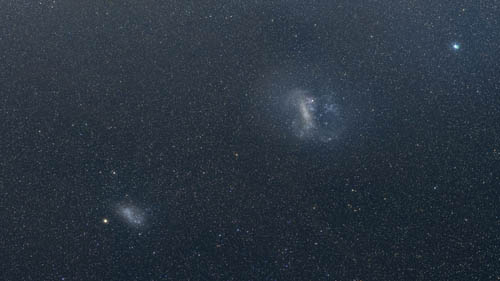We've learned about
white dwarfs,
neutron stars, and
black holes. Could any of these contribute to dark matter?
Let's look at each of them a little more.
White dwarfs are the stellar remnants of low to medium-mass stars after they have stopped fusing hydrogen in the core. After fusion stops, the white dwarf slowly cools down. As it cools down, the emission of radiation slowly wanes. What happens after the white dwarf completely cools (i.e. matches the temperature of the surrounding interstellar medium), is that no longer radiates. When a white dwarf reaches this stage of its life, we call it a black dwarf. However, it is believed that black dwarfs are yet to exist in our galaxy as not enough time has passed since the Milky Way was formed for black dwarfs to reach that stage.
Neutron star are the stellar remnants of medium-high mass stars, and much like white dwarfs, no longer fuse material in its interior. When a neutron star is born, it is extremely hot, and cools down in a manner similar to white dwarfs. But since neutron stars form from larger stars, it is more likely there are "space-temperature" neutron stars out there, since larger mass stars reach their final stages much quicker than lower mass stars. When neutron stars supernova, it is possible to push away the supernova remnant far from the central star. But again, not enough time has passed since the beginning of the Milky Way to have a ton of naked neutron stars in our galaxy.
The final stellar remnants, black holes, are formed from the highest mass stars. If the star's supernova was energetic enough, it could have pushed all the surrounding gas and dust away from the central black hole, not allowing any accretion to occur. Since black holes by definition do not emit any radiation and these black holes have no accretion disk (no superfast gas and dust orbiting the singularity, no jets of radiation being beamed along the poles of the black hole, no evidence that the black hole is there), the black hole is truly invisible. These black holes could be tiny (relatively speaking) with masses only a couple of times that of the Sun. If there are enough of these black holes, they could form a large chunk of dark matter.
To summarize:
- White dwarfs could constitute a portion of the dark matter, but it is highly unlikely
- Neutron stars could be a fraction of dark matter, but not a significant amount
- Naked black holes could very likely contribute to the amount of dark matter found in our galaxy





